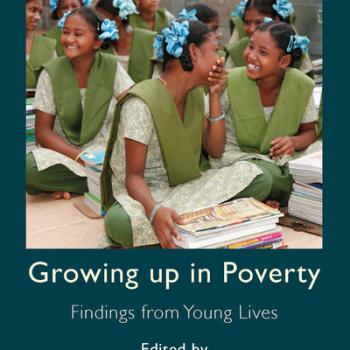Publication Information

This chapter explores the association between the quality of school services, socio-economic status, and achievement at different ages for a cohort of Peruvian children. Given the empirical associations between socio-economic characteristics and achievement, a relevant question for policy is whether or not schools in developing countries are providing services of comparable quality to children from different backgrounds. If all students attend schools of comparable quality, the achievement differences related to socio-economic status are likely to remain the same over time (other things being equal); if, however, children of lower status attend schools of lower quality, achievement differences are likely to grow, while if children of lower status attend schools of higher quality achievement differences are likely to diminish over time. Based on previous studies in Peru (Cueto 2007), this chapter analyses if three child and family characteristics (gender, mother?s education and mother tongue) are linked to number of years children spend in pre-school between birth and the age of 2 and from 3 to 5 years old; and if these in turn are linked to their cognitive development at the age of 5 and later to the quality of their primary school; and whether all of these predict their achievement at the age of 8.
The final published version of the chapter is available on the publisher's website.
Reference:
Cueto, Santiago, Juan León and Ismael G. Muñoz (2014) 'Educational Opportunities and Learning Outcomes of Children in Peru: A Longitudinal Model', in Michael Bourdillon and Jo Boyden (eds) Growing up in Poverty: Findings from Young Lives (pp. 245-268). Basingstoke: Palgrave Macmillan.

This chapter explores the association between the quality of school services, socio-economic status, and achievement at different ages for a cohort of Peruvian children. Given the empirical associations between socio-economic characteristics and achievement, a relevant question for policy is whether or not schools in developing countries are providing services of comparable quality to children from different backgrounds. If all students attend schools of comparable quality, the achievement differences related to socio-economic status are likely to remain the same over time (other things being equal); if, however, children of lower status attend schools of lower quality, achievement differences are likely to grow, while if children of lower status attend schools of higher quality achievement differences are likely to diminish over time. Based on previous studies in Peru (Cueto 2007), this chapter analyses if three child and family characteristics (gender, mother?s education and mother tongue) are linked to number of years children spend in pre-school between birth and the age of 2 and from 3 to 5 years old; and if these in turn are linked to their cognitive development at the age of 5 and later to the quality of their primary school; and whether all of these predict their achievement at the age of 8.
The final published version of the chapter is available on the publisher's website.
Reference:
Cueto, Santiago, Juan León and Ismael G. Muñoz (2014) 'Educational Opportunities and Learning Outcomes of Children in Peru: A Longitudinal Model', in Michael Bourdillon and Jo Boyden (eds) Growing up in Poverty: Findings from Young Lives (pp. 245-268). Basingstoke: Palgrave Macmillan.

